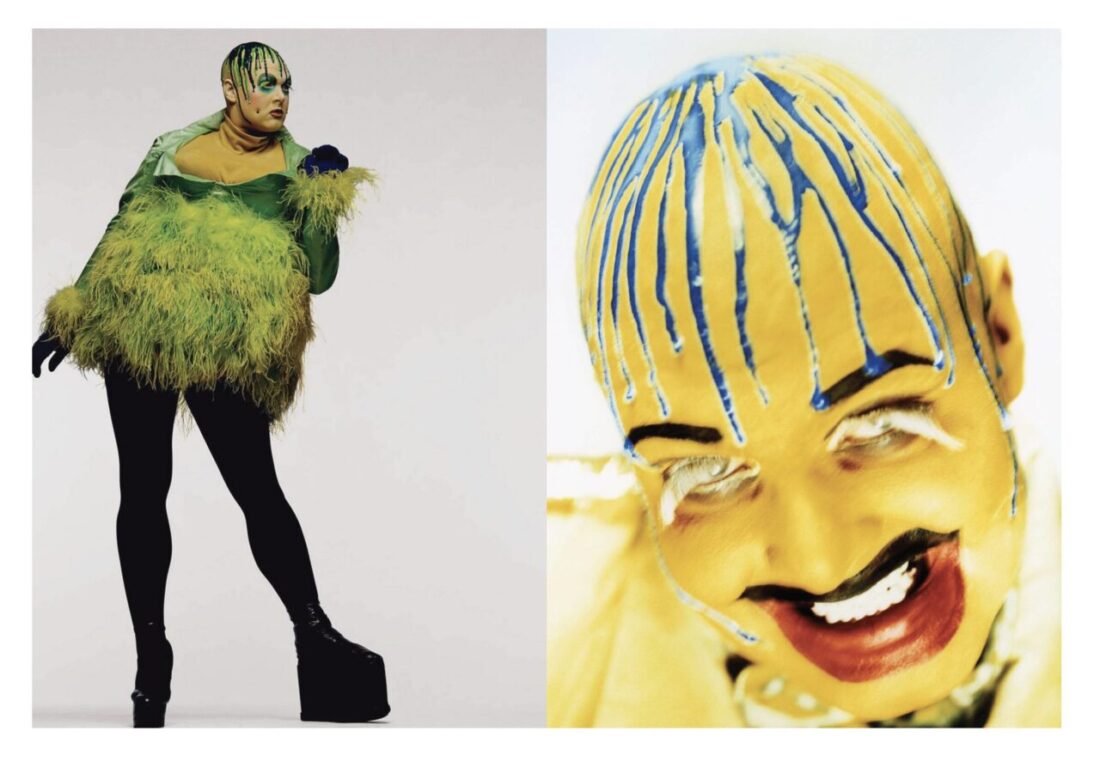

3 March 2025

Leigh Bowery lived fast, blazed like a comet-sized star and died young from AIDS. Now his life and career are celebrated in a stunning exhibition as colourful, brash and cheeky as Leigh himself and his outlandish clubland designs that were a cross between high fashion and performance art.
Once seen never forgotten, Leigh, was an enormous Australian with a shaved head, standing 6ft 3in and higher in towering platform soles. He was a preening peacock into shock and awe, cut from the same exhibitionist cloth as that other Stately Homo, Quentin Crisp, who had paraded his rouge-faced, henna-haired homosexuality in the coffee shops and on the streets of Soho in the 70s. Leigh had a different stage – he was a creature of the night, a legendary figure in the cutting edge nightclubs of London in the 1980s including Taboo, the nightclub Bowery hosted in a Leicester Square basement on Thursday nights.
The TV film The Naked Civil Servant would catapult Crisp to national attention, but it would take Boy George’s 2002 musical Taboo to put long-dead Bowery on posters across London’s tube network and buses when it ran in both the West End and later on Broadway. He was the most outrageous character from that scene and Boy George, who famously described his friend Leigh as “modern art on legs”, would actually play him on stage complete with trademark latex and paint runny egg splatter on his head.
This lovingly crafted and curated exhibition at Tate Modern easily fills many rooms, tracing Bowery’s beginnings as a fashion designer and club kid in the nightlife of 1980s London, through to his later performances in galleries, on the stage – wh0 can ever forget his AIDS benefit enema fired from his anus over the front rows of the crowd at The Fridge, that led to police action and the venue almost losing its licence? – the street and beyond, until his death in 1994. Using photos, outfits, postcards, diaries, it is a vivid journey into the dynamic creative scene inhabited by Bowery and his friends.
In an age before we all had I phones and Instagram to record every moment of our lives, Bowery was photographed regularly for the pages of magazines like i-D and The Face and painted in oils many times by Lucien Freud. His looks were iconic, he wanted, he said, to be like that “weirdo in the street that you tell your mum about”. He would use his entire body as a canvas: he extended spots from the fabric of his clothes onto his face, dripped paint down his bald head and even attached fake herpes scabs to his face. Spots would soon give way to sequins. There’s also two fabulous video sequences, one with Leigh, Rachel Aubern and his flatmate Trojan (who would die of a drugs overdose) and choreographer Michael Clark dressing up for a night out, bitching about what they are wearing, drinking massive glasses of neat vodka, another with Leigh on The Clothes Show parading his looks among the diners in a swanky London hotel.
What amazes you most about the many many outfits exhibited is the sheer quality of the design, fabrics and workmanship. Most are more than three decades old, but they are in pristine condition.
He only told one person about his HIV status, Sue Tilly, who was also famously painted by Freud. Her excellent 1997 biography, Leigh Bowery: The Life and Times of an Icon, has been reprinted and the gift shop as you exit the exhibition has signed copies.
If you were there is in 80s and 90s this exhibition is a must-see. I can’t wait to drop in again.